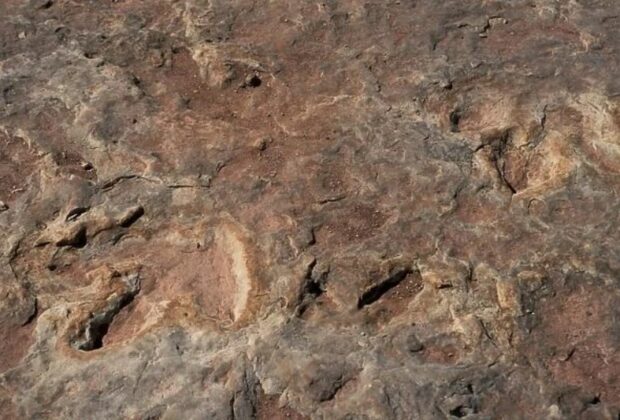A new study discovers that hunter-gatherers in what is now Brazil made dozens of exquisite rock-art masterpieces close to dinosaur footprints that date back as far as 9,400 years.
In a paper published on March 19 in the journal Scientific Reports, researchers reported the dinosaur tracks and petroglyphs, which are from the Cretaceous period (145 million to 66 million years ago). Many petroglyphs are within 2 to 4 inches (5 to 10 centimeters) away from the fossilized traces, and some of the glyphs appear to be drawings of the dinosaur prints, leading some experts to believe that ancient humans placed the rock art adjacent to the prints on purpose.
“The individuals who crafted the petroglyphs were acutely aware of the footprints, likely selecting the location precisely because of them,” study first author Leonardo Troiano, an archaeologist from Brazil’s National Institute of Historic and Artistic Heritage, told Live Science. “It would have been impossible to overlook their presence.”
The northeastern state of Paraíba’s Serrote do Letreiro archeological monument, also known as “Signpost Hill” in Portuguese, lies around 7 miles (11 kilometers) away from the Sousa municipality’s urban core. The Valley of the Dinosaurs, a protected area well-known for its hundreds of preserved dinosaur footprints, is not far from it.
The area’s fossilized dinosaur prints have been known to scientists since the early 20th century, but the rock art has only been sporadically discussed throughout the years, according to the latest study. Although the Kiriri, the primary Indigenous population in northeast Brazil’s hinterlands, were known to have left at least one old etching, Troiano claimed that the closeness of the dinosaur trackways to the petroglyphs had never been recorded.
A group of middle school pupils who visited the location in 2023 participated in the study conducted by Troiano and associates. Along with studying archaeology and paleontology, the students assisted with taking pictures of the fieldwork.
The researchers discovered that many dinosaur taxa, including two-legged ornithopods like iguanodontian dinosaurs, long-necked sauropods, and meat-eating theropods, are represented in the traces. The study’s authors hypothesized that the footprints’ similarity to those of the largest living bird in Brazil, the emu-like rhea (Rhea americana), may have made it simpler for prehistoric people to identify and understand these fossil remnants.
The petroglyphs are thought to have been created by individuals who lived in the area between 9,400 and 2,620 years ago. They are mostly carvings of circles filled with lines and other geometric strokes. “They were small seminomadic groups of hunters and gatherers who lived in society and used objects made from stones,” Troiano stated.
“We compared the art to archaeological sites in the region with similar or identical rock art,” Troiano added, because the researchers were unable to locate any organic remains that would have allowed for radiocarbon dating. For example, radiocarbon examinations of human remains indicate that petroglyphs at Pedra do Alexandre, some 200 km (120 miles) west of Serrote do Letreiro, date back as long as 9,400 years ago.
The researchers discovered that piercing and scraping were the two methods used by ancient humans to create the recently disclosed sculptures.
“Perforation involves using a kind of stone hammer to create depressions on the surface, resembling stippling, while scraping entails rubbing a stone against the surface until it forms the desired engraving,” Troiano explained. To improve visibility and depth, both approaches were sometimes combined.







